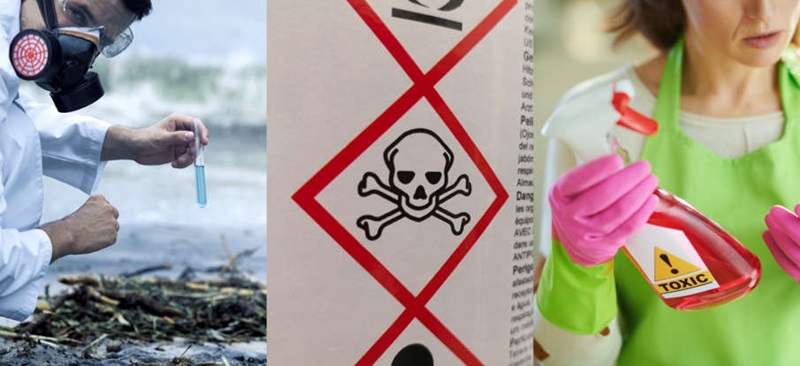
Hidden Everyday Toxins (2): Household Cleaning Agents
The Dishwashing Detergents We Use All the Time to Clean dishes – Are They Really Safe?
The main ingredient of household cleaning agents is sodium lauryl sulphate, a secondary derivative produced during petroleum refinery process. In actual fact, the common cleaning agents sold in supermarkets are no more than concoctions of many different chemicals whereby each ingredient is added for the purpose of helping us to clean conveniently, prolong the product shelf life, entice us to buy more and a host of other reasons. As such, the ingredients list include chemicals like surfactants, foaming agents, artificial fragrances, preservatives, softeners, colour pigments and so on. If you google each of these chemical constituents online, you will be in for an unpleasant surprise: most, if not all, of these chemicals are classified as toxic compounds by international agencies.
Common toxic chemicals in your household cleaners
- Phthalates
Found in many fragranced household products such as air fresheners and dish soap. If you see the word “fragrance” on a label, there’s a good chance phthalates are present. Phthalates are known endocrine disruptors. Exposure to phthalates occurs through inhalation and skin contact. The skin has no safeguards against toxins – absorbed chemicals go straight to organs.
- Perchloroethylene or “PERC”
Found in dry-cleaning solutions, spot removers and carpet cleaners. Perc is a neurotoxin, according to the U.S. Environmental Protection Agency and is classified as a “possible carcinogen”. The route of exposure is most often inhalation like the fumes that linger after cleaning carpets.
- Triclosan
Found in most liquid dishwashing detergents and hand soaps labelled “antibacterial”. It is also a common ingredient in toothpaste, facewash and a host of personal care products. Triclosan is linked to liver and inhalation toxicity, and low levels of triclosan may disrupt thyroid function.
- QUATS (Quaternary Ammonium Compounds)
Found in fabric softener liquids and sheets and most household cleaners labelled “antibacterial”. They help breed antibiotic-resistant bacteria. They are also suspected as a culprit for respiratory disorders and a skin irritant. They are deemed “asthmagens”, substances that can cause asthma to develop in otherwise healthy people.
- 2-Butoxyethanol
Found in window, kitchen and multipurpose cleaners. According to the EPA website, in addition to causing sore throats when inhaled, at high levels it can also contribute to drug-induced drowsiness, pulmonary edema, and severe liver and kidney damage. It is considered a possible human carcinogen.
- Chlorine
Found in toilet bowl cleaners, laundry whiteners and household tap water. It is a respiratory irritant and may be a serious thyroid disruptor. Exposure to chlorine is due to inhalation of fumes and skin absorption while showering.
Since 1920s, countless chemical compounds, nearly impossible to be synthesised naturally in our living environment, are being churned out in the laboratories continuously and this has served to push chemical factories to manufacture large number of cheap and good, disposable cleaning products that leads to rampant use of chemicals and plastics. In contrast, for the sake of species survival, humans and living creatures gradually acquired biological characteristics that enable them to adapt to different environmental conditions over the long course of Earth history. Under the onslaught of such synthetic chemical deluge, just how much detox capacity do we humans and other living creatures have that will render these chemical compounds harmless to us?
Furthermore, it is not hard to observe that cancer has become an increasingly common disease amongst the worldwide population. Not only that, but people suffering from various unexplainable skin conditions, respiratory problems, brain diseases etc., are also on the uprise. Now is it possible that this is due to our contact with an unknown number of chemicals each day?
Instead of using household cleaning agents to remover dirt and grease, our Purity Household Water Maker Products – Chu Xiao Bao – present an all-natural and environmentally friendly way to do exactly the same without impacting your health negatively.
Question To Ask?
We are the first wellness service provider in Singapore who actively uses innovative and advanced technology in our services and products.
We’d love to satisfy your curiosity about our offerings!


